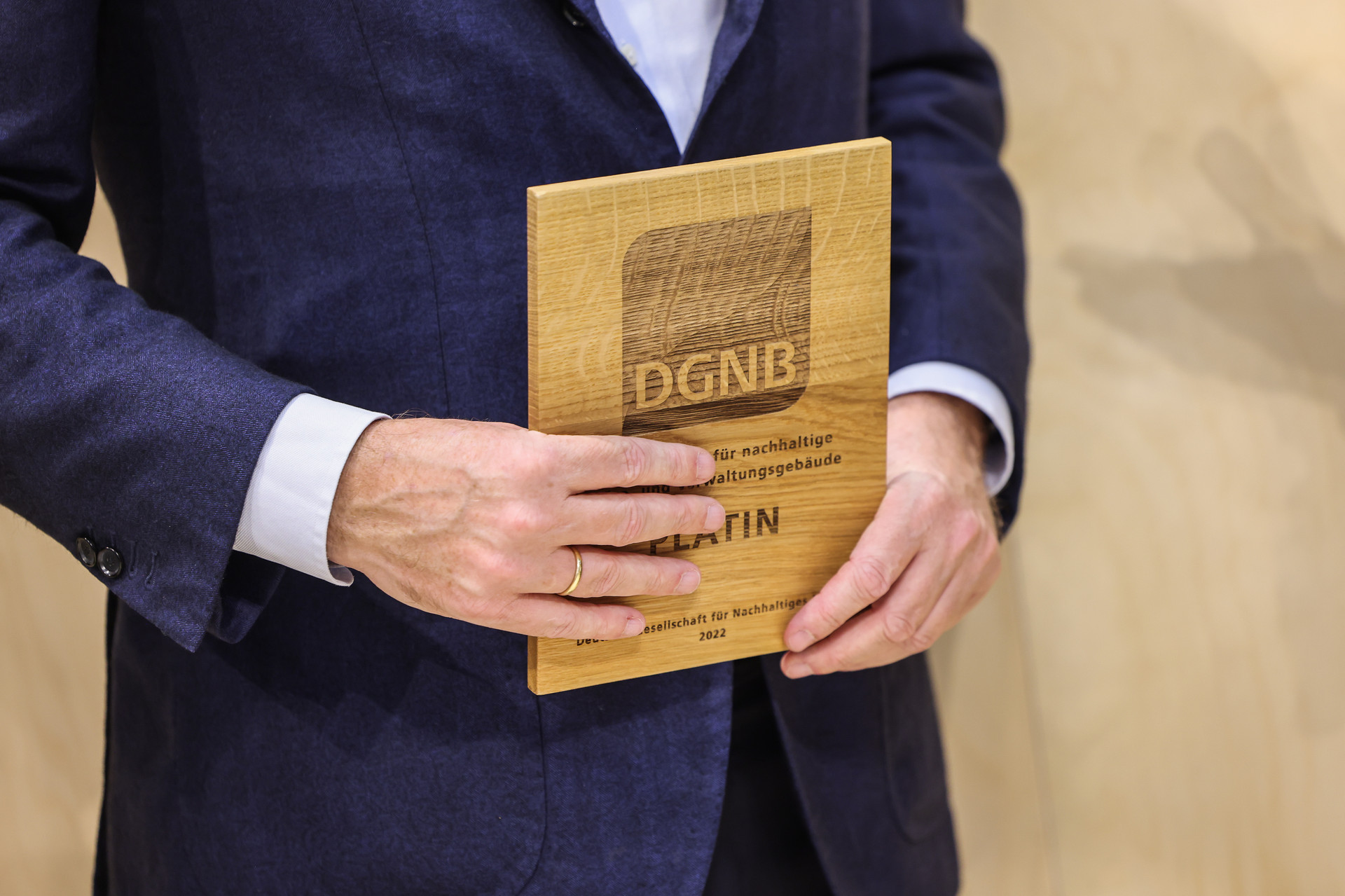Today, a large number of new buildings or renovation measures are preceded by deconstruction. In planning practice, however, this is often not yet taken into account. In order to consistently close material flows, promote a higher value of the building stock and establish solutions in line with the circular economy on all levels involved, a systematic look at the planning of deconstruction measures is required. It is a matter of protecting and preserving the building stock as well as valuing the materials. This is precisely where the DGNB System for Deconstruction comes into play. As an instrument for quality assurance, it systematically sets incentives to increase the sustainability of deconstruction processes in a holistic way.
What distinguishes a sustainable building deconstruction?
Overall, five basic principles can be defined that characterise sustainable building deconstruction:
Creating transparency: In order to safeguard the value of the available resources, transparency must be created with regard to the masses and transport distances involved in deconstruction, the costs and risks of deconstruction and the value of the resources that are still present at the end of the life cycle.
Identifying hazardous substances: Hazardous substances must be identified and disposed of appropriately. The aim here is not that reuse takes place at any price, but rather to achieve the highest possible level of material separation by type, separating the hazardous substances so that further materials can be kept in the loop.
Optimising recycling and disposal: In order to maintain a high value of resources in terms of the circular economy, it is necessary to optimise the recycling and disposal paths and, if possible, to aim for reuse or recycling on site. Likewise, the masses accrued on the construction site must be separated according to type.
People focus: Dealing with the people involved is particularly important. On the one hand, the issue of safety plays an important role here. On the other hand, proactive communication with both employees and local residents is crucial. It enables a smooth process and prevents conflicts.
Improving and expanding processes: To achieve these goals, existing deconstruction processes must be improved and expanded. As processes are crucial to optimising deconstruction as a whole, the DGNB System places a clear focus here.
Certification criteria
The DGNB System does not assess individual measures, but rather the overall performance based on criteria. A total of twelve criteria are taken into account for deconstruction, which address the five topics of environmental quality, economic quality, sociocultural and functional quality, technical quality and process quality. All of these five topics are equally weighted in the evaluation.
The certificate
As with the other forms of certification of the DGNB, the DGNB System for Deconstruction is assessed according to the degree of fulfilment. The total performance index is calculated from the assessments of the individual criteria. The highest DGNB award is the platinum certificate.
From a total performance index of 50 percent, the project is awarded the DGNB Certificate for Deconstruction in Silver. From a degree of fulfilment of 65 percent, the project is awarded the DGNB Certificate for Deconstruction in Gold. For a DGNB Certificate for Deconstruction in Platinum, the project must achieve a total performance index of 80 percent. In the pilot phase, no minimum degree of fulfilment is required for each topic.
Circularity Index
The certificate also shows the "Realised Circularity" as a key figure in percent. This is based on the Circularity Index. The index is used to evaluate the masses accrued during deconstruction on a project-specific basis according to the selected recycling and disposal paths. The introduction of the index should make it possible to compare the circularity of deconstruction projects in the mid-term. The common recycling and disposal paths are compared with those actually used in the project.
Certification process
The DGNB aims to anchor certification at an early stage in the planning process. For this reason, the DGNB System for Deconstruction offers the possibility of obtaining a pre-certificate. The registration for the pre-certificate and the certificate are submitted together. It is possible to submit selected criteria in the pre-certificate and have them finally checked for the certificate.
Application and submission
In the pilot phase, the system will be applied and finally tested on first projects. It can be used for all building schemes. Interested parties and their projects have the opportunity to participate actively. The certification of the deconstruction can also have a positive effect on the certification of subsequent projects on site.
All those involved in the deconstruction process can submit the documents for certification during the pilot phase, e.g. deconstruction planners, specialists for hazardous substance remediation, (specialist) site managers, health and safety coordinators and where appropriate also municipal representatives. This person is defined as project responsible in the project registration.
Certification fee
During the pilot phase, certification fees are set at a uniform level, irrespective of the size of the deconstruction project:
- For DGNB members: 2500 € plus VAT
- For non-members: 4500 € plus VAT
Project registration

As part of the initial application of the DGNB System for Deconstruction, all those involved in the deconstruction process in terms of content can also submit the documents for certification. This includes planners for deconstruction projects, consultants for hazardous materials remediation, (technical) site managers, health and safety coordinators and, if applicable, municipal representatives. This person is defined as the project manager as part of the project registration.
Selected DGNB certified projects

Offices and Administriative Buildings

Offices and Administriative Buildings
Your contacts
Markus Kelzenberg
Chief Executive Officer DGNB GmbH / Certification Body
- Phone: +49-711-722322-75
- Email: m.kelzenberg@dgnb.de
